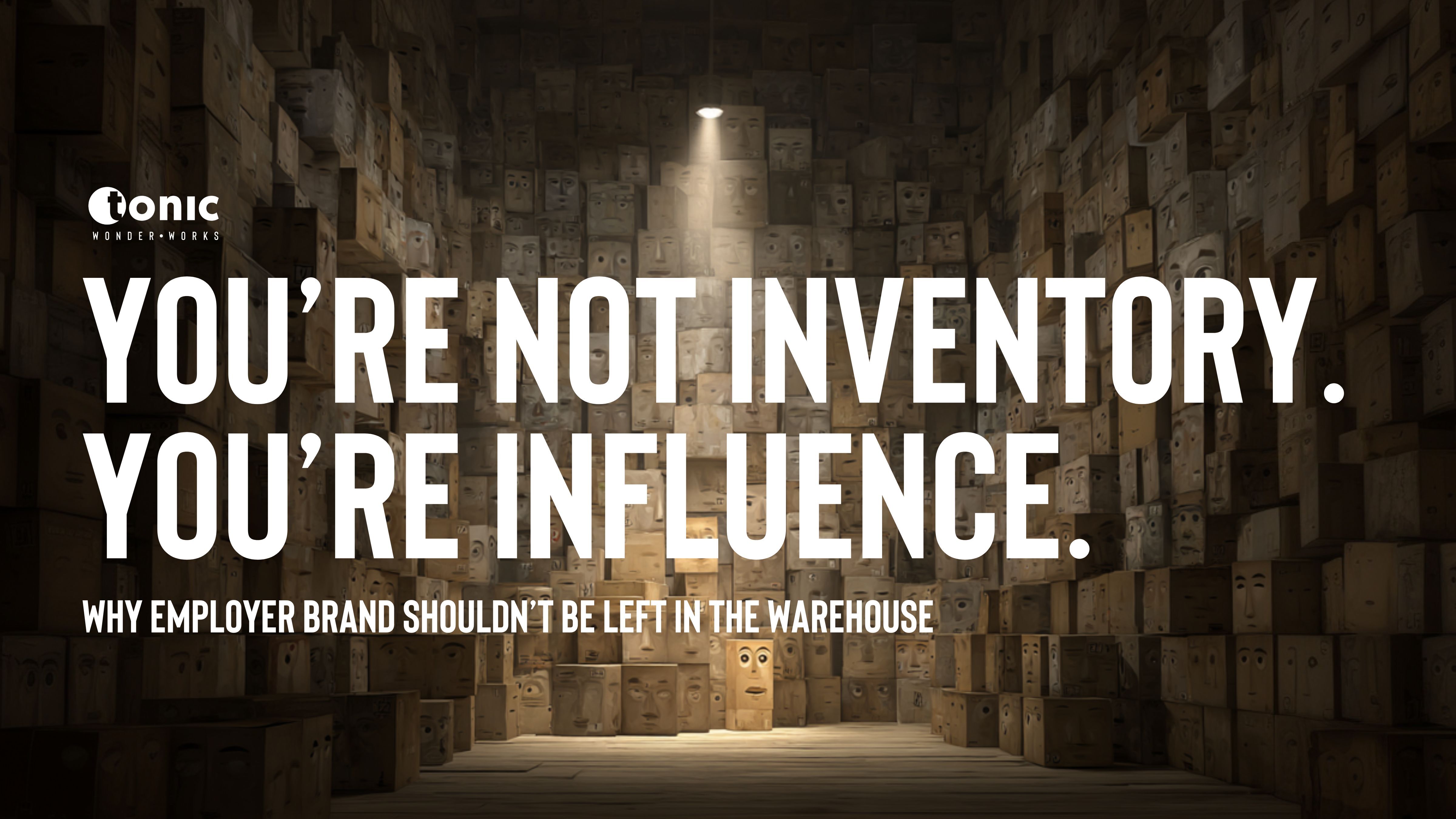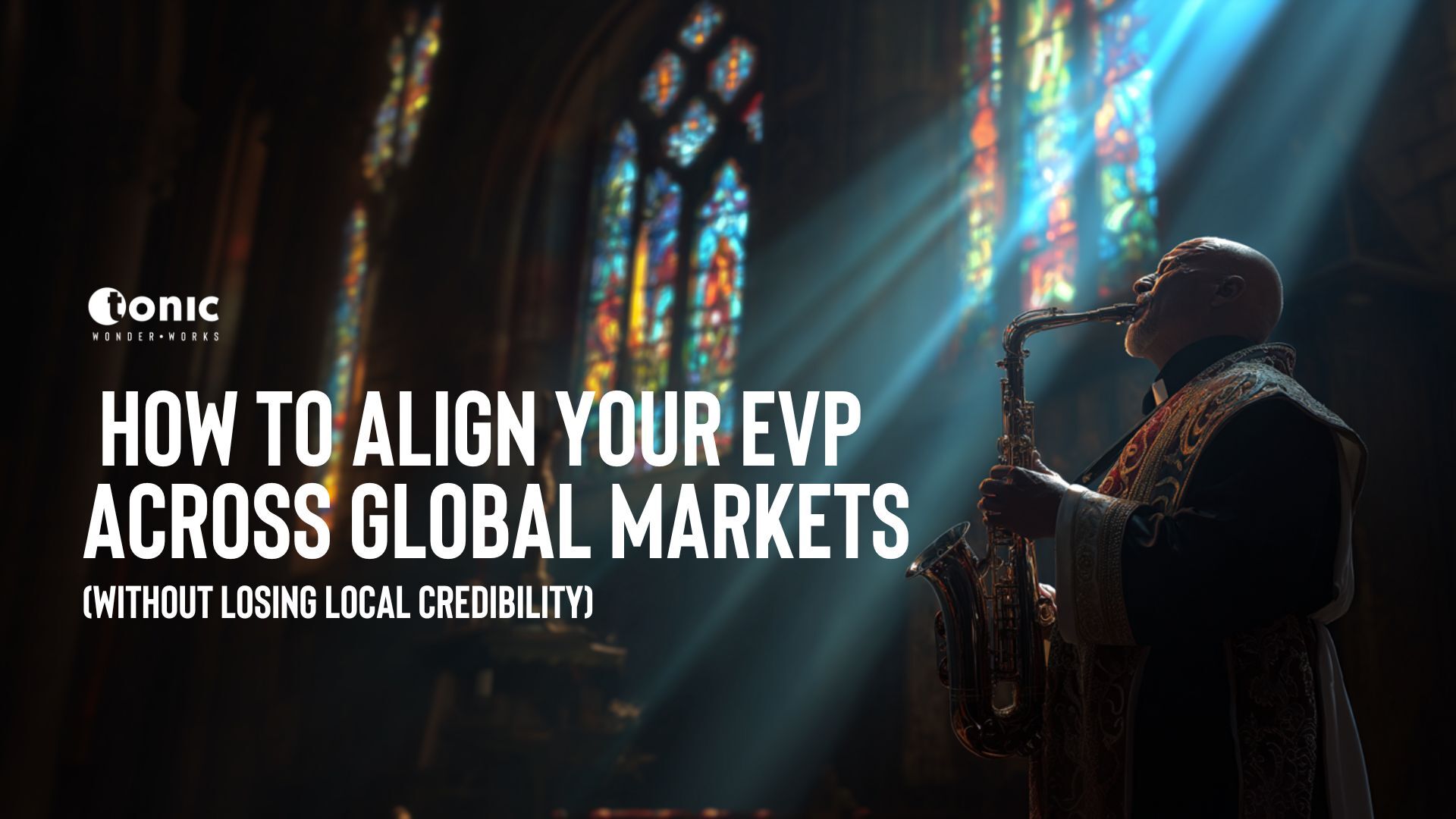The Most Underused Efficiency Tool in Your Business
Most people think of employer branding as something you put on the business.
Logos. Careers sites. Stock photos of “collaborative” people laughing near whiteboards. A campaign to “humanise the hiring experience,” often involving hex colours and hashtags.
Nice enough. But utterly wrong-headed.
Because here’s the thing: a good employer brand isn’t a costume, it’s a shortcut.
A way of making the business work better, not just look better.
Done properly, it doesn’t just help you attract people. It helps you filter, align, retain, and decide. That’s not reputation management. That’s operational efficiency.
But we’re getting ahead of ourselves. Let’s start with the mess.
The Problem with Hiring People (and Hoping for the Best)
Most businesses approach hiring like online dating. A combination of unrealistic photos, over-edited bios, and wildly inaccurate expectations on both sides.
The result? You get a lot of first dates, not many second ones.
Early attrition. Interview loops that spiral. People leaving because “it wasn’t quite what I expected.”
Which translates, quite directly, to time and money flushed down the nearest metaphorical drain.
Now here’s the twist: this isn’t a recruitment problem. It’s a branding one.
Because if no one knows what you actually stand for, if there’s no signal, you rely on luck, gut feel, or hiring for “fit,” which is usually code for “they remind me of me.”
A strong employer brand is a signal. Not a slogan. A way of showing people what they’re getting into, and letting them decide if that suits them or not.
Which is much cheaper than finding out three months in.
Branding as Efficiency, Not Aesthetic
We’re so used to thinking of branding as visual and reputational that we forget it can be functional.
It’s a filtering mechanism. A time-saver. A source of clarity.
Look at the companies with strong, distinctive employer brands. Patagonia. Dyson. Aldi. They’re not vague about who they are. Or what working there will feel like.
That clarity cuts waste. Fewer CVs to sift through. Fewer mis-hires. Fewer retention problems. Shorter onboarding curves. Less duplication of effort.
You don’t need to rewrite the job spec six times if you know what story you’re telling. You don’t need to explain your culture in the interview if they’ve already felt it in the application process.
It’s not about “being attractive.” It’s about being legible.
As MRINetwork put it recently (7 August 2025): “Branding activates the passive.”
They were talking about talent who aren’t actively job-hunting. But the same’s true internally. When people understand what the business stands for, they don’t need micromanaging. They get on with the job.
Because the real value of employer brand isn’t external at all.
It’s internal alignment.
It makes decisions faster. Behaviour more consistent. Priorities clearer. And that is very efficient indeed.
An Operating System, Disguised as a Story
The best analogy I’ve heard:
Employer brand is the operating system for people decisions.
Most businesses run dozens of disconnected programmes: recruitment, onboarding, L&D, performance reviews, engagement surveys.
All of them eating time, budget and energy, without much joining them up.
Brand, done right, ties them together. Quietly. Behind the scenes.
It gives context. Frames behaviour. Reduces second-guessing. It becomes the invisible script everyone’s working from.
And that, to borrow from the language of engineers, reduces friction.
Fewer cultural collisions. Fewer awkward conversations. Fewer costly U-turns when someone says, “Hang on, is this actually how we do things here?”
So what now?
If you want your employer brand to do more than sit on the careers page looking pretty, stop treating it as a campaign, and start embedding it in how the business runs.
Here are three good places to start (though don’t call them tips; call them little acts of common sense):
1. Get brutally honest about your EVP
Don’t write it like a sales brochure. Write it like a well-informed warning label. What’s great and what’s hard. What you reward. What you won’t tolerate. Good branding doesn’t hide trade-offs, it celebrates them. That’s what gives it credibility.
2. Make onboarding the brand in action
Onboarding isn’t a tick-box exercise. It’s where values either take root or quietly die. Use those first few weeks to show, not just tell, what “good” looks like here. Embed the expectations people will actually be judged against.
3. Bring internal comms in from the cold
If your employer brand says “we move fast,” but your internal comms read like a policy manual from 1997, you’ve got a credibility problem. Make sure your tone, channels, and cadence reinforce the identity you’re selling. Otherwise, it’s just noise.
Most people think of branding as the sugar on top.
In reality, it’s the recipe.
Get it right, and everything else, the hiring, the onboarding, the decision-making, the retention, starts to taste better.
Or at least, makes a bit more sense. Which in business, is more than half the battle.





